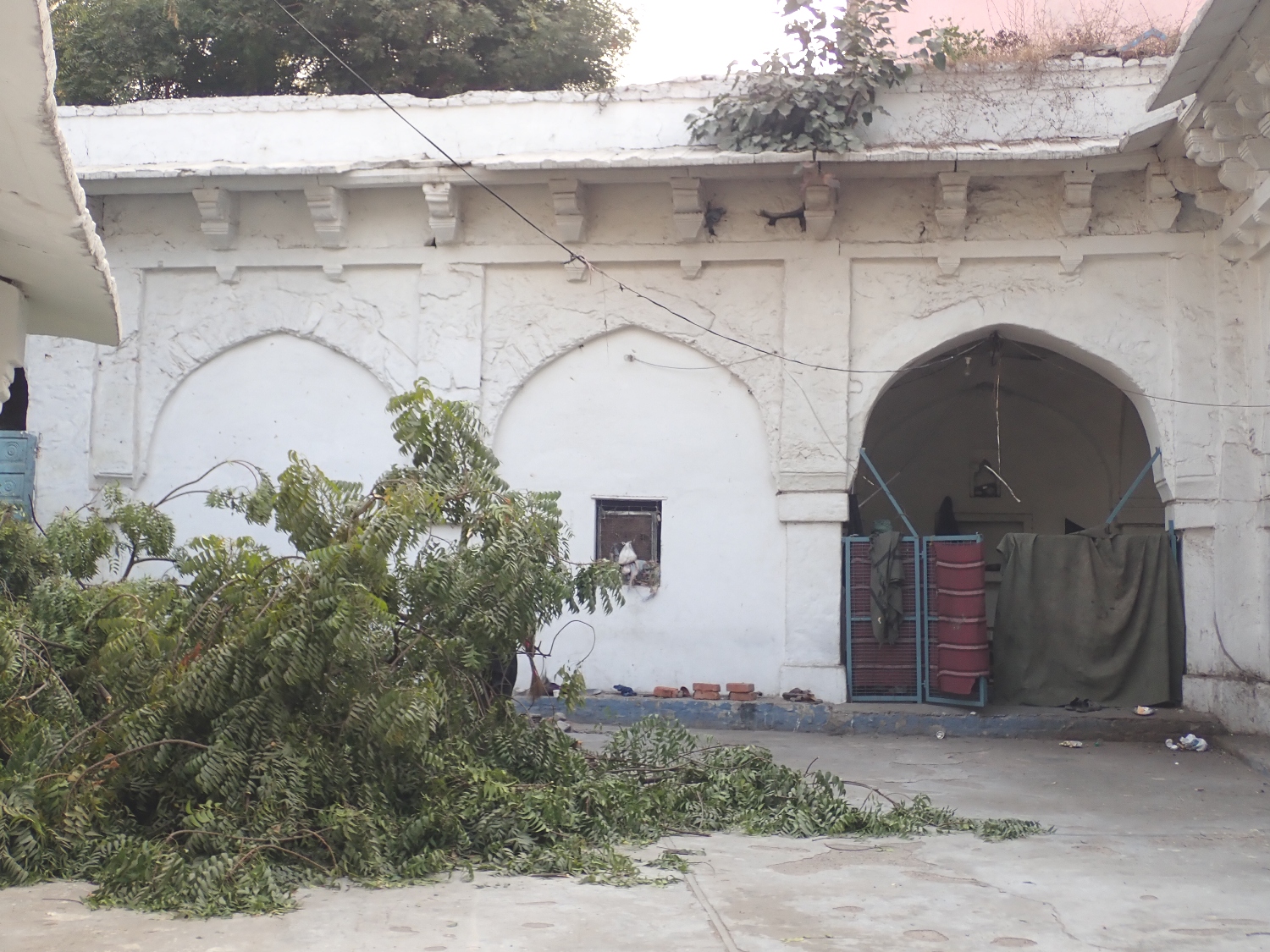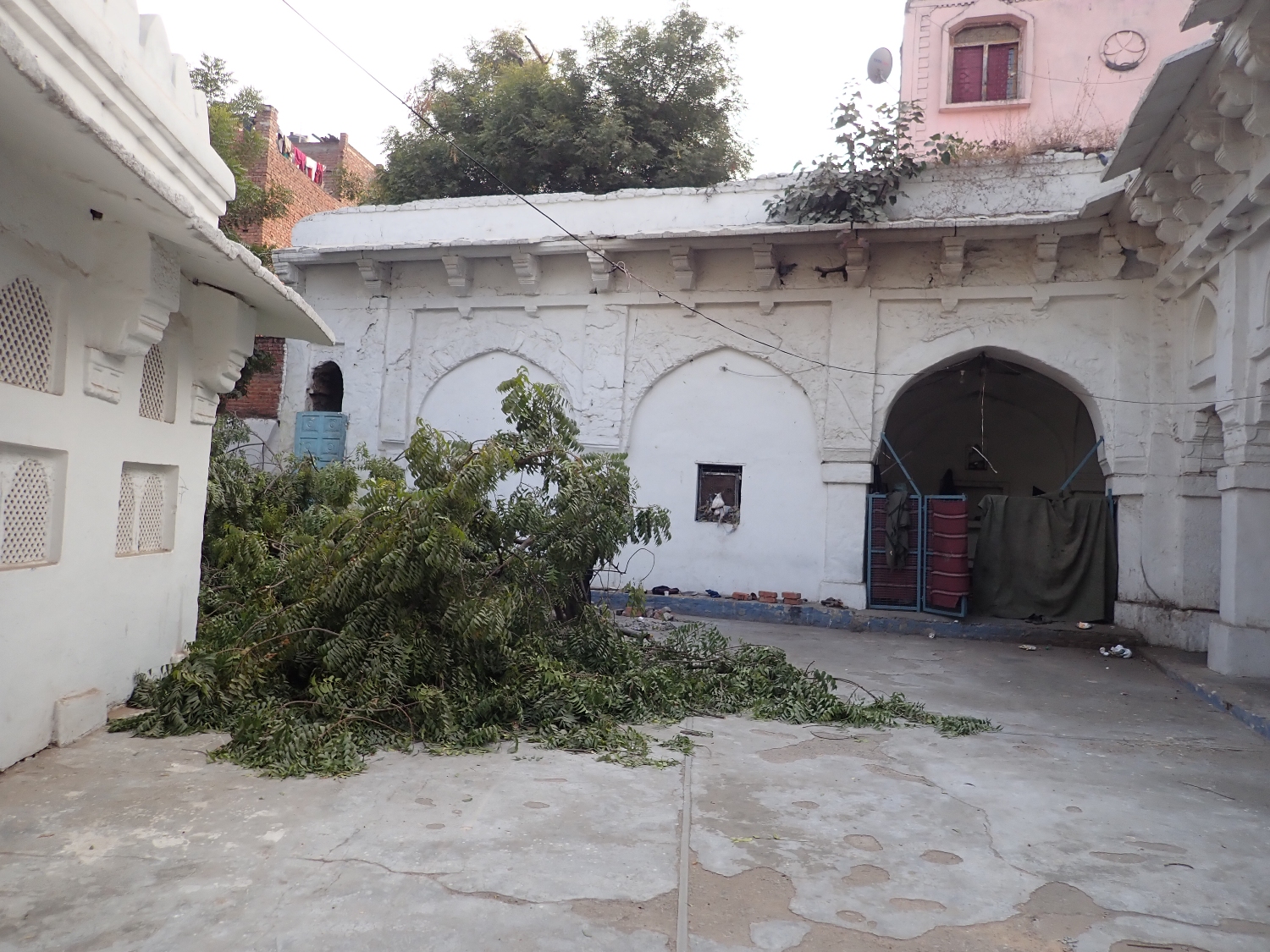

The Mahfil Khana was built during the Lodi era (1451–1526), a period known for its architectural developments blending Indian and Persian influences. Architectural Style : The Mahfil Khana exemplifies an Indo-Persian style, reflecting the synthesis of Indian craftsmanship with Persian design principles. Structure and Design : The Mahfil Khana is a rectangular, single-story structure featuring three prominent pointed arches as entrances. Of these, two entrances are now closed with walls, while the central arch remains open. Rectangular pilasters support these arches, extending to the wall’s edge and adding structural stability. The flat roof is enhanced by a decorative stone chajja (eave) supported by intricately carved stone brackets, lending an elegant touch to the exterior. Building Materials : The main structure is made of random rubble masonry bonded with lime mortar. Sandstone has been used for the brackets, flooring, and roof. The building is coated with a layer of lime plaster, which contributes to both its aesthetic appeal and structural protection.